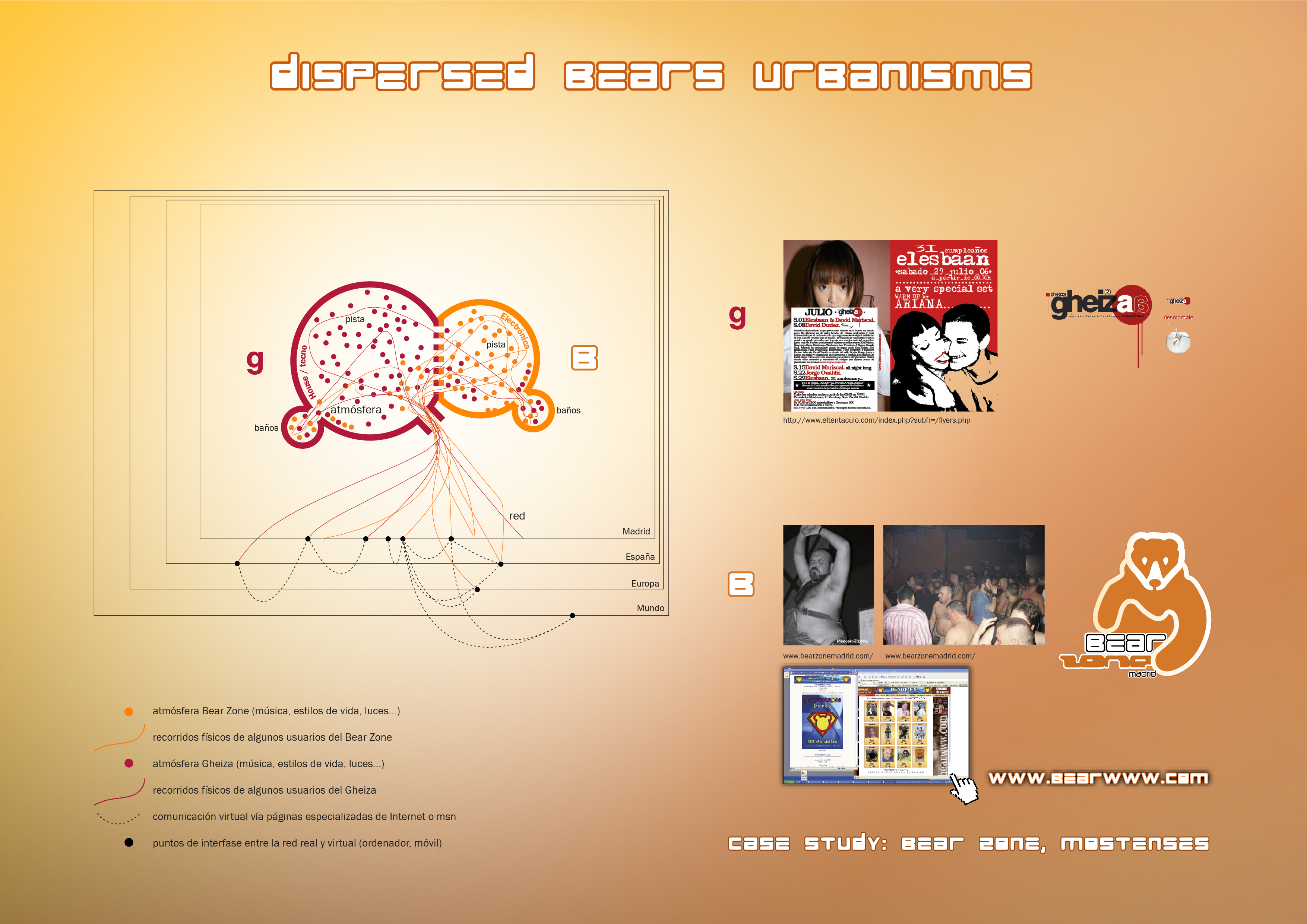When we migrated from
Rotterdam to Madrid in 2003, after studying the urban developments within the
Cape Verdean diasporic community, we continued to explore what we referred to
as “dispersed urbanisms”, which means urban environments that operate
at various levels (multi-scale) and through different types of physical and
virtual channels (multimedia). We found it particularly interesting to study
dispersed urban environments that were close to us but often overlooked in
urban studies. Possibly this neglect occurred because these urbanisms were
linked to communities that were also overlooked. For example, the
configurations that emerged around the gay bear community, in which we used to
be involved. Their spaces and networks provided us with valuable insights. One
of the reasons was that they challenged the traditional interpretation of
concepts like “public space”, which is commonly regarded as the main
location for interactions between different groups. They demonstrated the
societal significance of other physical-virtual locations that functioned in a
similar manner, albeit with distinct spatial features.
For example, the spatial configurations around some
nightclubs generated very specific forms of encounter between the bear
community and other urban tribes. To comprehend the territory of those
communities, it was important to consider not just the physical space, but also
how it was articulated through virtual spaces. For example, contact websites
such as bearwww.com were very important. While this
site was mainly used for dating, it was also used for other purposes such as
renting rooms or looking for a job (Diego Barajas, “El espacio urbano para
las prácticas creativas como interfaz hacia otra globalización y el habitante
como constructor de la ciudad”, in N. Aramburu (ed.), Un lugar bajo el
sol, Buenos Aires, CCEBA-AECID, 2008, p. 114-115). Classic books
like “Queer Space” by Aaron Betsky (1997) or the works of Jan
Kapsenberg with Bart Lootsma, who was our professor at the Berlage Institute
(2000-2002), served as pioneering references for us in our research endeavors.
At that time there were very few examples of queer culture in architecture and
urbanism.

